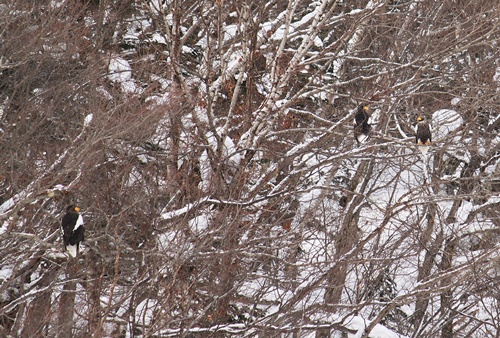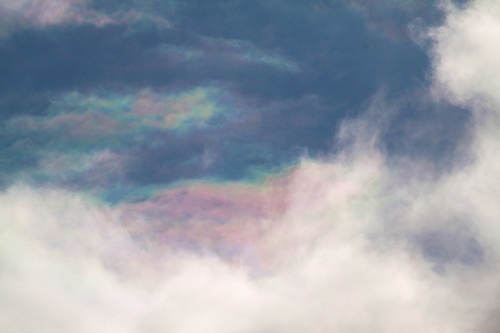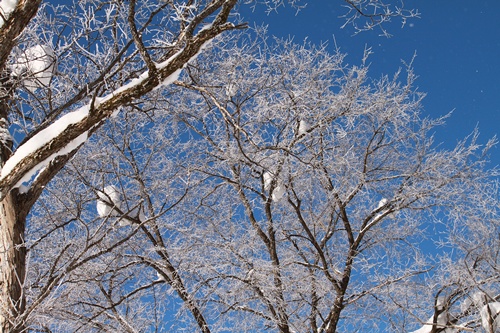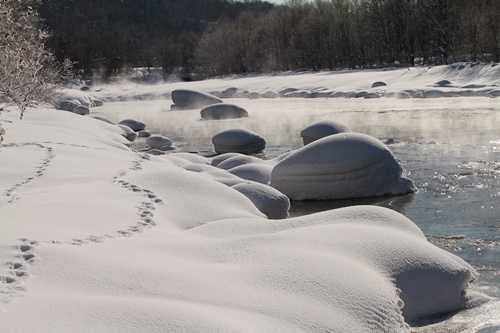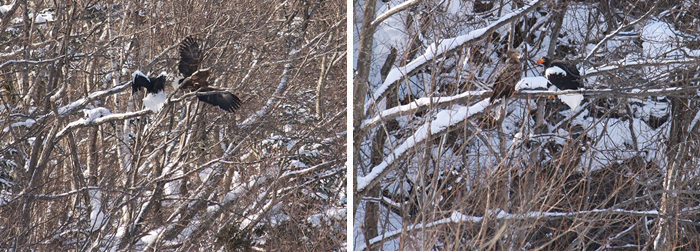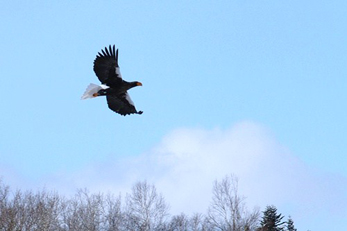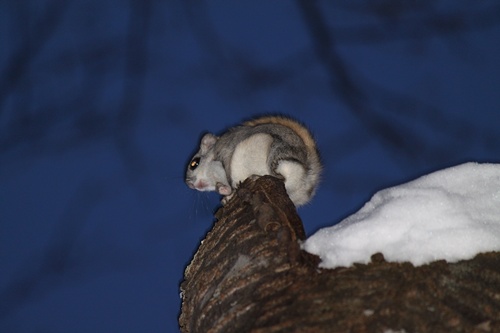Over the past several days, I have seen Haliaeetus pelagicus and Haliaeetus albicilla (both protected species) flying in the area. I initially thought my sighting of them the other day was simply coincidence; however, the sightings have become so frequent that I decided to get a closer look.
There were no crows flying about, so it did not appear the eagles were gathering around the remains of Cervus nippon yesoensis. However, I looked closer…
And there they were!
And not just the remains of one deer, but two…
There were only a few crows in the area and the remains were in the back of a sunken area of snow, so they were easy to miss without a close look.
The carcasses were on the other side of the river, so I could not get any closer. Nonetheless, a number of crows sensed my movement and came out clamorously from the snow.
Including the Haliaeetus pelagicus and Haliaeetus albicilla, there were more than 10 birds present.
They presented a very majestic sight.
Three Haliaeetus pelagicus can be seen in the photo.
Photo: Haliaeetus pelagicus at Sounkyo Feb. 7
There were no crows flying about, so it did not appear the eagles were gathering around the remains of Cervus nippon yesoensis. However, I looked closer…
And there they were!
And not just the remains of one deer, but two…
There were only a few crows in the area and the remains were in the back of a sunken area of snow, so they were easy to miss without a close look.
The carcasses were on the other side of the river, so I could not get any closer. Nonetheless, a number of crows sensed my movement and came out clamorously from the snow.
Including the Haliaeetus pelagicus and Haliaeetus albicilla, there were more than 10 birds present.
They presented a very majestic sight.
Three Haliaeetus pelagicus can be seen in the photo.
Photo: Haliaeetus pelagicus at Sounkyo Feb. 7
